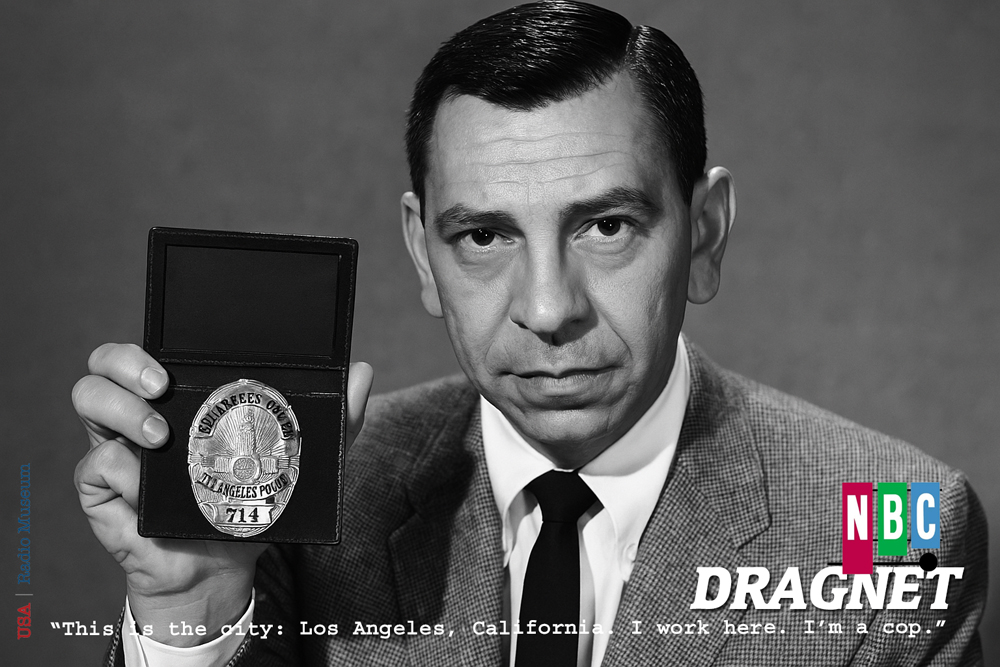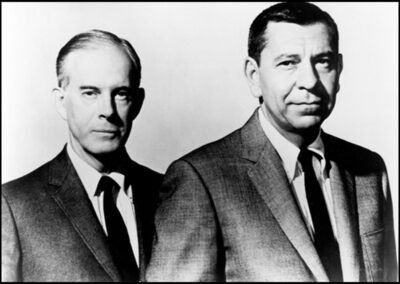From Airwaves to Ethics: The Realism That Made Dragnet Iconic In the summer of 1949, as America’s postwar optimism settled into a r
From Airwaves to Ethics: The Realism That Made Dragnet Iconic
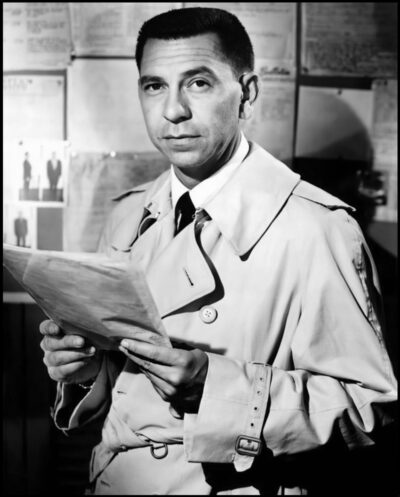 In the summer of 1949, as America’s postwar optimism settled into a rhythm of domestic routine, a new kind of storytelling quietly emerged on the national airwaves. Dragnet, debuting on NBC Radio, wasn’t born out of the sensational pulp of dime-store detective tales, but rather from a single, radical intention: to show police work as it truly was—methodical, unglamorous, and grounded in reality. Created and helmed by the meticulous and determined Jack Webb, Dragnet reshaped the cultural image of law enforcement by focusing not on high-speed chases or shootouts, but on paperwork, procedure, and the tireless pursuit of justice.
In the summer of 1949, as America’s postwar optimism settled into a rhythm of domestic routine, a new kind of storytelling quietly emerged on the national airwaves. Dragnet, debuting on NBC Radio, wasn’t born out of the sensational pulp of dime-store detective tales, but rather from a single, radical intention: to show police work as it truly was—methodical, unglamorous, and grounded in reality. Created and helmed by the meticulous and determined Jack Webb, Dragnet reshaped the cultural image of law enforcement by focusing not on high-speed chases or shootouts, but on paperwork, procedure, and the tireless pursuit of justice.
Webb’s inspiration came during his work on Pat Novak for Hire, a noir-style detective drama. Frustrated by its theatrical excess, he resolved to develop something more honest. Partnering with the Los Angeles Police Department, Webb immersed himself in their world—attending training sessions, poring over case files, and absorbing the cadence of patrolmen and investigators. What he crafted was revolutionary for its time: a documentary-style drama, stripped of melodrama, narrated with the stoic determination of his iconic character, Sergeant Joe Friday. His now-immortal catchphrase—“Just the facts, ma’am”—became a shorthand for the show’s integrity and stark realism, even as the line itself was a distilled paraphrase of his style rather than a direct quote from the scripts.
As the series evolved over its eight-year radio run on NBC Radio, Dragnet quietly but powerfully transformed American broadcasting. Its soundscapes—stark footsteps, typewriter clatter, muted sirens—formed a sonic architecture that mirrored the everyday grind of law enforcement. Every case unfolded with clarity, purpose, and an unwavering devotion to truth. This was not fiction for mere entertainment; it was dramatized record keeping. And audiences responded, ushering Dragnet to immense popularity that would soon leap from radio to television in 1951, making it one of the first multi-platform storytelling successes.
But the essence of Dragnet was born from the intimate theater of radio—where the listener, alone with the voices and cues, imagined the gray corridors of police headquarters, the press of city streets, and the quiet tension of an interrogation room. It’s here, in this format, that Webb’s masterpiece most richly lived. Through its carefully sculpted dialogue and immersive sound design, Dragnet didn’t just tell stories—it taught a generation to think critically about justice, duty, and public service.
Today, nestled within the vaults of the USA Radio Museum are 1,759 preserved audio files of Dragnet, each a testament to this cultural milestone. These episodes—some crackling with vintage broadcast flair, others preserved with pristine clarity—will be featured in our archive alongside this retrospective, inviting listeners to experience the series not as nostalgia, but as living history. For anyone who has ever leaned into a speaker to catch “the facts,” this journey into Dragnet’s origin promises to reconnect us with the pulse of mid-century radio drama, where truth and storytelling found common ground on the dial.
Just the Facts: The Radio Legacy of Dragnet and the Rise of Joe Friday
 As Dragnet matured across its near-decade on NBC Radio, so too did its storytelling rhythm and production sophistication. While the early episodes leaned heavily on stark realism and educational tone—sometimes even citing statistics or procedures verbatim from LAPD manuals—later iterations of the show embraced subtler emotional undertones. The format never strayed from its procedural core, but Webb and his team began to explore the psychological weight of police work. Episodes delved into moral ambiguity, the burdens of justice, and the quiet sorrows officers carried in the line of duty.
As Dragnet matured across its near-decade on NBC Radio, so too did its storytelling rhythm and production sophistication. While the early episodes leaned heavily on stark realism and educational tone—sometimes even citing statistics or procedures verbatim from LAPD manuals—later iterations of the show embraced subtler emotional undertones. The format never strayed from its procedural core, but Webb and his team began to explore the psychological weight of police work. Episodes delved into moral ambiguity, the burdens of justice, and the quiet sorrows officers carried in the line of duty.
Innovations in sound design accompanied this narrative deepening. Foley effects became more precise, pacing was fine-tuned, and voice acting sharpened into a distinct cadence that became synonymous with the show’s identity. By the early 1950s, Dragnet had cemented its methodical style—dialogue clipped, narration steady, and tension driven not by spectacle, but by silence, implication, and the inexorable unfolding of consequences.
Reception followed accordingly. Critics lauded Dragnet for its integrity and restraint, heralding it as an antidote to the sensationalist fare dominating the airwaves. The show was praised not only for its realism, but for its influence: newspapers reported on its positive impact on public opinion toward police, and LAPD Commissioner William H. Parker famously credited Webb’s portrayal with improving recruitment and morale. Families tuned in not just for entertainment, but for a glimpse into civic duty performed under pressure and principle.
At the center of it all was Joe Friday—not flashy, not verbose, but unshakably earnest. He was the personification of mid-century American stoicism: practical, principled, and emotionally contained. Friday didn’t grandstand; he listened, he recorded, he pursued justice. His clipped delivery and “by-the-book” demeanor made him a paragon of professionalism in a turbulent age. Through radio, he became a symbol not of heroism, but of steadiness.
And as Dragnet transitioned to television in 1951, Joe Friday evolved from a voice to a visage—but the radio incarnation retained an intimacy television could not replicate. On air, Friday’s silences were interpreted by the listener’s imagination, and his convictions echoed in the mental theater radio so effortlessly conjured. This is the Friday preserved in the USA Radio Museum’s archives—a character shaped in sound, legacy preserved in magnetic tape and digitized waves.
_____________________
Sidebar 1. | Sponsor Spotlight: Chesterfield and the Commercial Pulse of Dragnet
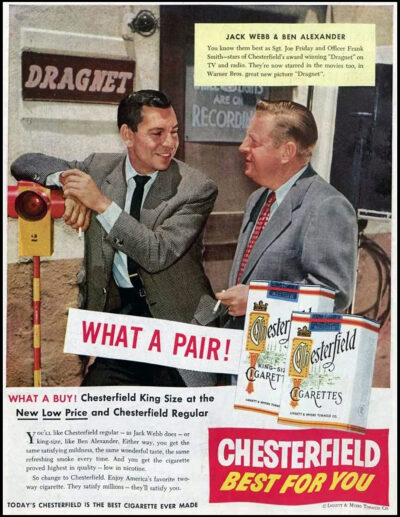 Before DVRs, streaming subscriptions, or ad-skipping buttons, radio and early television relied heavily on commercial sponsors to fund programming—and few shows wore their sponsor more prominently than Dragnet. In the early 1950s, Chesterfield cigarettes—produced by Liggett & Myers—became the official sponsor, embedding their brand into the very rhythm of the broadcast.
Before DVRs, streaming subscriptions, or ad-skipping buttons, radio and early television relied heavily on commercial sponsors to fund programming—and few shows wore their sponsor more prominently than Dragnet. In the early 1950s, Chesterfield cigarettes—produced by Liggett & Myers—became the official sponsor, embedding their brand into the very rhythm of the broadcast.
“Premium quality in every puff—Chesterfield’s are just what the detective ordered.”
— Dragnet live sponsor tag, circa 1953
Jack Webb, known for his insistence on realism, appeared in Chesterfield ads himself—often during live reads or promotional clips aired between segments. With his signature deadpan delivery, Webb extolled Chesterfield’s smoothness and “scientific blending,” lending an air of professionalism to a product marketed as modern and masculine.
Tobacco advertising wasn’t just accepted—it was aspirational. Brands like Chesterfield aligned themselves with authority, masculinity, and prestige. By sponsoring Dragnet, they gained credibility and access to one of America’s most trusted fictional figures.
But this era also serves as a mirror. Chesterfield’s involvement reminds us how commercial influence shaped aesthetics, delivery, and even pacing. Today, those ads read differently—offering a glimpse into the psychology of mid-century marketing.
_____________________
Dragnet Radio Series Timeline (1949–1957)
- June 3, 1949: Dragnet premieres on NBC Radio, starring Jack Webb as Sgt. Joe Friday and Barton Yarborough as Sgt. Ben Romero.
- 1950–1951: The show gains traction with its documentary-style realism and begins airing weekly, often titled “The Big ___” to reflect case details.
- December 27, 1951: Barton Yarborough dies suddenly; his character’s death is written into the episode The Big Sorrow.
- 1952–1955: Ben Alexander joins as Officer Frank Smith, becoming Friday’s longest-serving partner.
- September 1955–February 1957: Original episodes cease; NBC airs reruns during the final two years.
- Total Episodes: 314 original broadcasts.
Dragnet Television Series Timeline
Dragnet (1951–1959) – NBC
- January 3, 1951: TV adaptation debuts, running concurrently with the radio series.
- 1954: Dragnet film released, starring Webb and Alexander.
- 1951–1959: Eight seasons aired, totaling 276 episodes.
- September 10, 1959: Original TV series concludes.
Dragnet 1967–1970 – NBC
- January 12, 1967: Revival premieres as Dragnet 1967, starring Jack Webb and Harry Morgan as Officer Bill Gannon.
- 1967–1970: Four seasons aired, each titled by year (e.g., Dragnet 1968).
- April 16, 1970: Series finale airs.
- Total Episodes: 98 episodes plus one TV movie (Dragnet 1966).
Dragnet Film & Later Revivals
- 1987: Satirical film released starring Dan Aykroyd and Tom Hanks.
- 1989: The New Dragnet debuts with a new cast.
- 2003: L.A. Dragnet reboot airs briefly with Ed O’Neill as Joe Friday.
Cast Spotlight: Dragnet’s Radio Voice
Before television framed their faces, Dragnet‘s ensemble defined authenticity through sound—each voice a thread in the fabric of civic drama.
At the helm was Jack Webb (1920–1982), creator and voice of Sergeant Joe Friday, whose clipped precision became the template for realism. Honored with the LAPD’s retired badge #714, Webb’s legacy resonated in every broadcast.
Barton Yarborough (1900–1951) played Sergeant Ben Romero, Friday’s empathetic first partner. After his death, his passing was written into the show with rare emotional gravity.
Ben Alexander (1911–1969), as Officer Frank Smith, offered warmth and balance—his performance bridged radio and television alike.
Barney Phillips and Herb Ellis briefly filled partner roles, delivering understated professionalism during transitional episodes in 1952.
The versatile Virginia Gregg (1916–1986) became a signature voice—portraying Friday’s mother and key witnesses with emotional nuance, while Olan Soule (1909–1994) gave forensic expertise a quiet dignity that later evolved into voicing Batman.
Announcers George Fenneman (1919–1997) and Hal Gibney (1911–1973) set the stage with calm authority and documentary tone—framing every episode in crisp authenticity.
Together, these performers didn’t just carry lines—they carried public trust. The soundscape they created remains one of radio’s most powerful expressions of duty, realism, and quiet conviction.
Faces of Dragnet on Television
As Dragnet evolved from radio to screen, its cast transformed into visual icons of realism and restraint.
Jack Webb, reprising his role as Sergeant Joe Friday, brought clipped cadence and procedural gravity that earned him posthumous honors—including the LAPD’s retirement of badge 714. In the 1967–70 revival, Harry Morgan joined as Officer Bill Gannon, balancing Friday’s stoicism with warmth and wit.
Radio veterans like Virginia Gregg and Olan Soule bridged formats. Gregg delivered quiet strength in domestic scenes, famously voicing Norma Bates in Psycho, while Soule’s forensic portrayals lent technical gravitas—and later animated life as Batman.
Supporting actors added cohesion and depth: Don Ross appeared in over 30 episodes as reliable lab techs and officers; Art Balinger embodied institutional command in roles like Captain Hugh Brown; Peggy Webber brought emotional nuance to her investigations; and Marco Lopez, often in uniformed roles, provided continuity that mirrored real LAPD service—later starring in Emergency! as firefighter Marco Lopez.
These performers anchored Dragnet not through theatrics, but through quiet conviction and collaborative realism, helping shape a genre where justice spoke plainly.
Radio Fan Favorites
“The Big Little Jesus” (1953)
A Christmas episode where a statue of the Child Jesus is stolen from a church. Friday and Smith must recover it before Christmas morning.
Poignant, heartfelt, and widely remembered for its emotional depth.
Dragnet | “The Big Little Jesus” | NBC Radio: December 22, 1953
Audio Digitally Enhanced by USA Radio Museum
“The Big Sorrow” (1951)
This episode dealt with the real-life death of Barton Yarborough (Ben Romero). Webb wrote Romero’s passing into the show, and Friday delivers a moving tribute.
A rare moment of vulnerability and grief in the series.
Dragnet | “The Big Sorrow” | NBC Radio: December 27, 1951
Audio Digitally Enhanced by USA Radio Museum
“The Big Imposter” (1951)
A con man impersonates a police officer, leading to a tense and layered investigation.
Showcases Dragnet’s commitment to procedural integrity.
Dragnet | “The Big Imposter” | NBC Radio: June 7, 1951
Audio Digitally Enhanced by USA Radio Museum
Cast Spotlight: Faces of Dragnet on Television
When Dragnet transitioned from radio to screen, its cast became more than voices—they became visual icons of a genre defined by restraint, realism, and duty. At the helm was Jack Webb, reprising his role as Sergeant Joe Friday. His clipped cadence and stoic delivery shaped the procedural blueprint and brought unprecedented gravity to televised law enforcement. Honored posthumously by the LAPD with the retirement of badge 714, Webb’s legacy as a producer, actor, and authenticity evangelist remains unmatched.
In the color revival of the late 1960s, Harry Morgan entered the picture as Officer Bill Gannon, Friday’s partner. Known for his warmth and wit, Morgan added layers of humanism to the series. Already a seasoned performer, Morgan would later cement his place in television history as Colonel Potter on MASH, rounding out a career that balanced authority and empathy.
Carrying over from radio, the versatile Virginia Gregg lent her talents to numerous roles—most memorably, as Joe Friday’s mother. Her steady voice and emotional clarity gave domestic scenes quiet power. Gregg’s presence in both radio and television made her a connective thread in Dragnet’s evolution, and her iconic role as the voice of Norma Bates in Hitchcock’s Psycho underscores her vocal range.
Also bridging media was Olan Soule, whose portrayal of forensic expert Ray Pinker brought technical accuracy and gentle charisma to the procedural world. His extensive voice acting portfolio, including his turn as Batman in animated series, made him one of the era’s most quietly prolific performers.
In over 30 episodes, Don Ross provided consistency in background and recurring roles, often portraying officers or lab specialists. His understated performance style added realism and depth to the show’s ensemble without ever stealing the spotlight—a true character actor’s gift.
Art Balinger, frequently cast as commanding officers like Captain Hugh Brown, embodied institutional gravitas. His firm tone and presence anchored scenes with authority, later continuing that ethos in other Jack Webb productions like Emergency! and Adam-12.
Transitioning from radio, Peggy Webber also contributed recurring roles, notably Janet Ohrmund. Known for her emotional depth, Webber’s nuanced performances added texture to investigations, reinforcing the humanity beneath every case.
And rounding out the ensemble, Marco Lopez served in background roles—often as a uniformed officer—and lent visible continuity to the show’s depiction of real LAPD life. He later starred in Emergency! as firefighter Marco Lopez, another Webb-led series that upheld Dragnet’s commitment to procedural accuracy.
Together, these faces brought Dragnet’s moral structure to life—not through melodrama, but through subtle expressions, measured words, and believable collaboration. Their performances didn’t just fill frames; they filled a cultural need for clarity, credibility, and quiet conviction.
Order and Reflection: How Dragnet Framed America’s Social Pulse
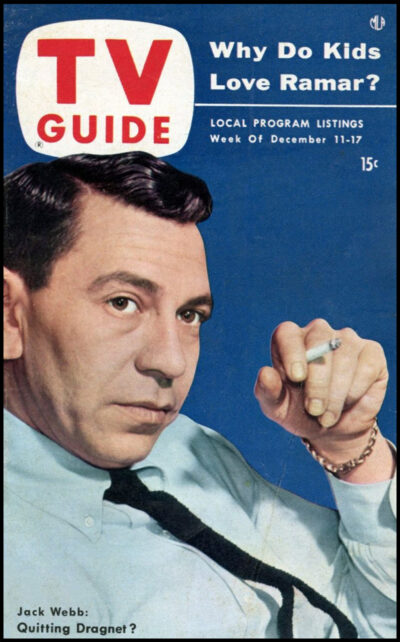 Behind the procedural structure, Dragnet quietly reflected the cultural and civic concerns of postwar America. The show tackled social issues with an unflinching lens—always respectful of law enforcement, yet mindful of the country’s challenges.
Behind the procedural structure, Dragnet quietly reflected the cultural and civic concerns of postwar America. The show tackled social issues with an unflinching lens—always respectful of law enforcement, yet mindful of the country’s challenges.
Episodes dealing with drug abuse, such as The Big Fix and The Big Pill, depicted addicts not merely as criminals, but as victims of systemic failings. With uncharacteristic sobriety, the show treated narcotics as a public health crisis long before that language entered common discourse.
Juvenile delinquency appeared frequently, with stories about runaway teens, shoplifting rings, and high school gangs. Rather than punishing young offenders with theatrical severity, the show leaned toward cautionary narratives—emphasizing prevention through parental involvement and education.
On the edges of its narrative, mental health and domestic violence emerged in quieter, more personal plot lines. While the 1940s and ’50s were not culturally equipped to confront these issues openly, Webb occasionally hinted at emotional trauma and psychological tension through somber monologues and subdued performances.
The show’s treatment of racial issues was mixed. While Dragnet featured Mexican-American detective Ben Romero in a co-lead role—a progressive step for the time—it rarely addressed race relations directly. The LAPD’s own segregation policies went untouched, reflecting both the show’s cautious realism and its dependence on police cooperation.
Duty, Dignity, and the Dragnet Effect: Police Ethics on the Airwaves
Jack Webb saw Dragnet not just as a drama, but as a moral mission. Each episode reinforced a deep respect for police ethics, due process, and civic responsibility.
The series emphasized procedural integrity above all: detectives documented every detail, respected chain of command, and exercised restraint even under pressure. Violence was never gratuitous, and impulsiveness was frowned upon.
Episodes were sometimes used in informal police training, a testament to Webb’s commitment to authenticity. By portraying officers as principled and methodical, Dragnet helped bolster public trust in law enforcement during the volatile Cold War years.
Webb avoided controversy—police misconduct and systemic flaws were left untouched—but within those limits, he built a model of accountability. Sergeant Joe Friday’s firm tone and thoughtful monologues served as reminders that justice was more than a job; it was a calling.
Dragnet | A Dragnet Special: Claude Jimmerson Child Killer | WWJ Radio (Detroit): February 2, 1950
Audio Digitally Enhanced by USA Radio Museum
Awards and Honors for Dragnet
- Emmy Awards:
Jack Webb received two Primetime Emmy nominations for Dragnet in the 1950s, including Outstanding Lead Actor in a Drama Series. Though he didn’t win, the nominations underscored the show’s early acclaim. - Hollywood Walk of Fame:
Webb was honored with two stars—one for radio and one for television—cementing his legacy across both mediums. - LAPD Recognition:
The Los Angeles Police Department held Webb in such high esteem that they retired badge number 714 in his honor after his death. They also gave him a full police funeral, a rare tribute for a civilian. - TV Guide & Nick at Nite Polls:
The episode “The LSD Story” from the 1967 revival was ranked #85 in TV Guide’s list of Greatest Episodes of All Time, highlighting its cultural resonance—even as a cautionary tale. - Training Tool Status:
Though not a formal award, Dragnet was reportedly used by police departments across the U.S. as an informal training resource, and some departments even timed roll calls around its airings.
_____________________
Sidebar 2. | Badge of Honor: The Story Behind 714
In a heartfelt tribute following Jack Webb’s death in 1982, the Los Angeles Police Department made an extraordinary gesture: they permanently retired badge #714, the number worn by Sergeant Joe Friday throughout Dragnet’s run. It was more than a symbolic nod—it was a public recognition of how deeply Webb’s portrayal had impacted real-world policing and public trust.
For decades, 714 became shorthand for integrity and procedure. Today, at the USA Radio Museum, we honor that legacy not only through Webb’s voice, but through the badge itself—a small emblem with a mighty resonance.
_____________________
Final Reflection: Sounding the Depths of Justice and Preservation
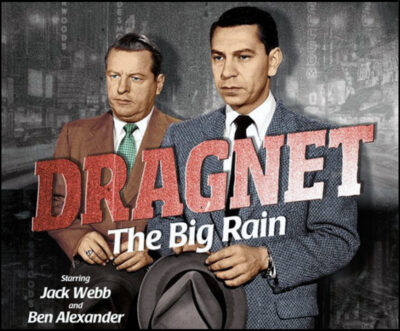 As we stand at the threshold between then and now, Dragnet offers more than just entertainment or even historical insight—it’s a sonic monument to American storytelling. It captured a nation’s yearning for order, truth, and civic responsibility at a time when broadcast media wielded enormous influence. Each meticulously crafted episode, crackling through speakers in living rooms across Detroit and beyond, stitched together a cultural thread that connected citizens to their public institutions and to each other.
As we stand at the threshold between then and now, Dragnet offers more than just entertainment or even historical insight—it’s a sonic monument to American storytelling. It captured a nation’s yearning for order, truth, and civic responsibility at a time when broadcast media wielded enormous influence. Each meticulously crafted episode, crackling through speakers in living rooms across Detroit and beyond, stitched together a cultural thread that connected citizens to their public institutions and to each other.
At the USA Radio Museum, the mission to preserve and honor this kind of legacy resonates deeply. We do not simply archive broadcasts; we protect the emotional resonance and cultural echoes contained within them. Dragnet holds a special place in this stewardship—not just for its volume—but for its values. It’s a series that honored procedure, ethics, and the power of sound to shape perception. Through Joe Friday’s unwavering tone, listeners didn’t just absorb information—they absorbed ideals.
To feature Dragnet in our museum’s archive is to offer a bridge: from the mid-century heartbeat of law enforcement drama to the curious ears of today’s audiences. These files are more than artifacts. They’re conversations waiting to be rekindled, values ready to be reawakened, and legacies ready to be lived.
Just like the slow click of a reel-to-reel tape winding to life, each preserved Dragnet episode offers listeners a chance to travel—not only through time, but through intention. These aren’t static recordings; they’re pulses from a period when truth and duty were broadcast into the homes of millions, shaping civic consciousness and sparking quiet reflection. By restoring and presenting them in our archive, we revive more than drama. We revive the sounds of a nation defining itself through law, empathy, and the power of radio.
So let these stories hum once more through our speakers. Let Joe Friday’s steady voice guide a new generation through the hallways of justice. And let Dragnet—as heard, felt, and remembered—continue its beat in the hearts of all who value clarity, conviction, and historical resonance.
_____________________
A USARM Viewing Tip: On your PC? Mouse/click over each image for expanded views. On your mobile or tablet device? Finger-tap all the above images inside the post and stretch image across your device’s screen for LARGEST digitized view.

